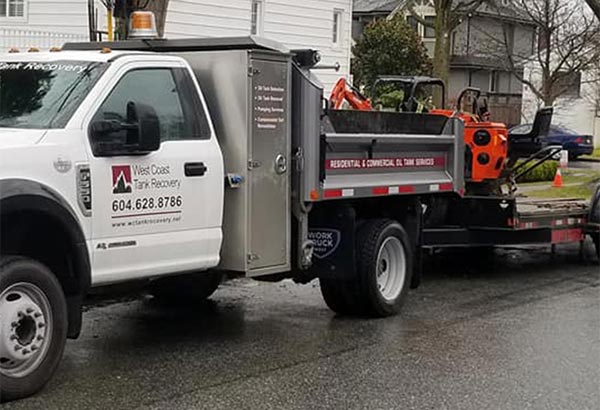 Fully Licensed and Insured
Fully Licensed and Insured Request an Oil Tank Scan
Request an Oil Tank Scan Request a Free Estimate
Request a Free Estimate

Oil tanks need to be accessed or removed for many reasons. For example, before natural gas was available, many homes obtained heat from furnace oil that ran in the oil tanks. But with natural gas, many of these oil tanks, often situated underground and in backyards, were either removed, or emptied and abandoned. It is a good idea to get underground oil tanks removed as soon as possible, since the property owner is responsible for any environmental damage created as a result of the oil tank, such as leaking and contamination. The property owner is also responsible for the removal of their oil tank, so it is crucial to choose a company that is sure to do the job right.
It is important to remember that an oil tank removal is not a one step process; there are tasks that must be completed before and after the removal, to ensure that your oil tank removal is a smooth operation.
Step 1: Detect
Initially, a trained technician from a reputable company will scan your property to locate the underground oil tank for removal. If you choose the right company for your oil tank removal, you can be sure that this task is being executed with the latest technology.
Step 2: Remove
What follows is the actual oil tank removal. This is a careful process that is often done in a contained area so that the oil, and contaminated sand and sludge can be removed without causing any further contamination or harm to the environment.
Step 3: Dispose
After all of the material is removed, it all must be disposed of, by following environmental standards. The metal procured during the oil tank removal process goes through a cleaning process before making its way to a depot to be recycled. The remaining contaminated sand, sludge, and oil are all disposed of safely in a municipal recycling facility. While these steps may all seem extensive, they are all for the good of one’s property and to avoid polluting the environment.
Step 4: Backfill
Once the oil tank removal and disposal process has been completed, there is also the task of returning the location from which the oil tank was removed to its original state. After soil testing, companies often offer a site restoration service and are able to backfill the site of the oil tank removal.
While the oil removal process may seem slightly extensive, it is beneficial for the property and the environment as a whole.